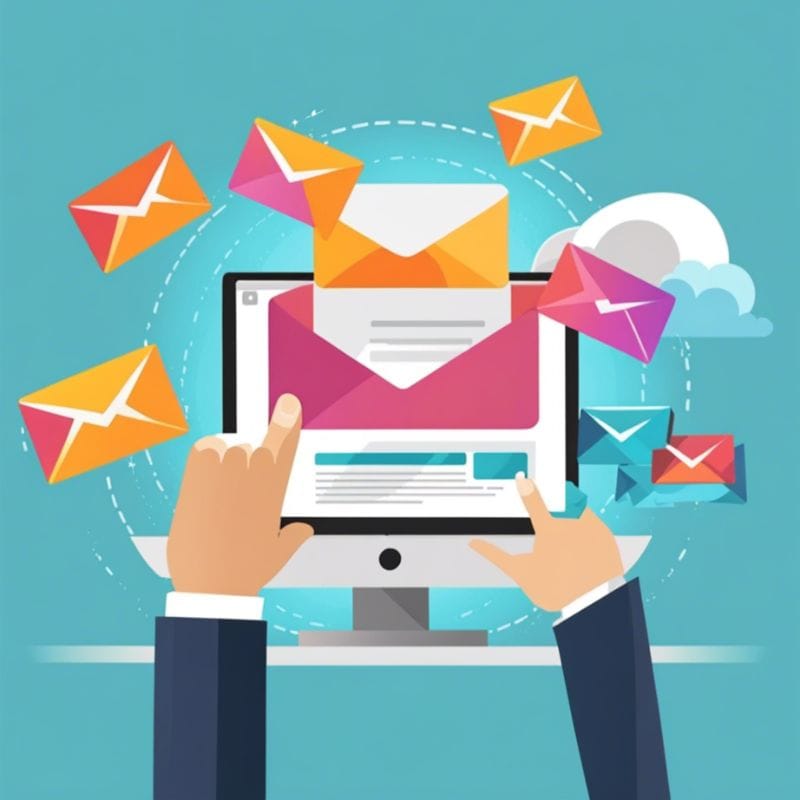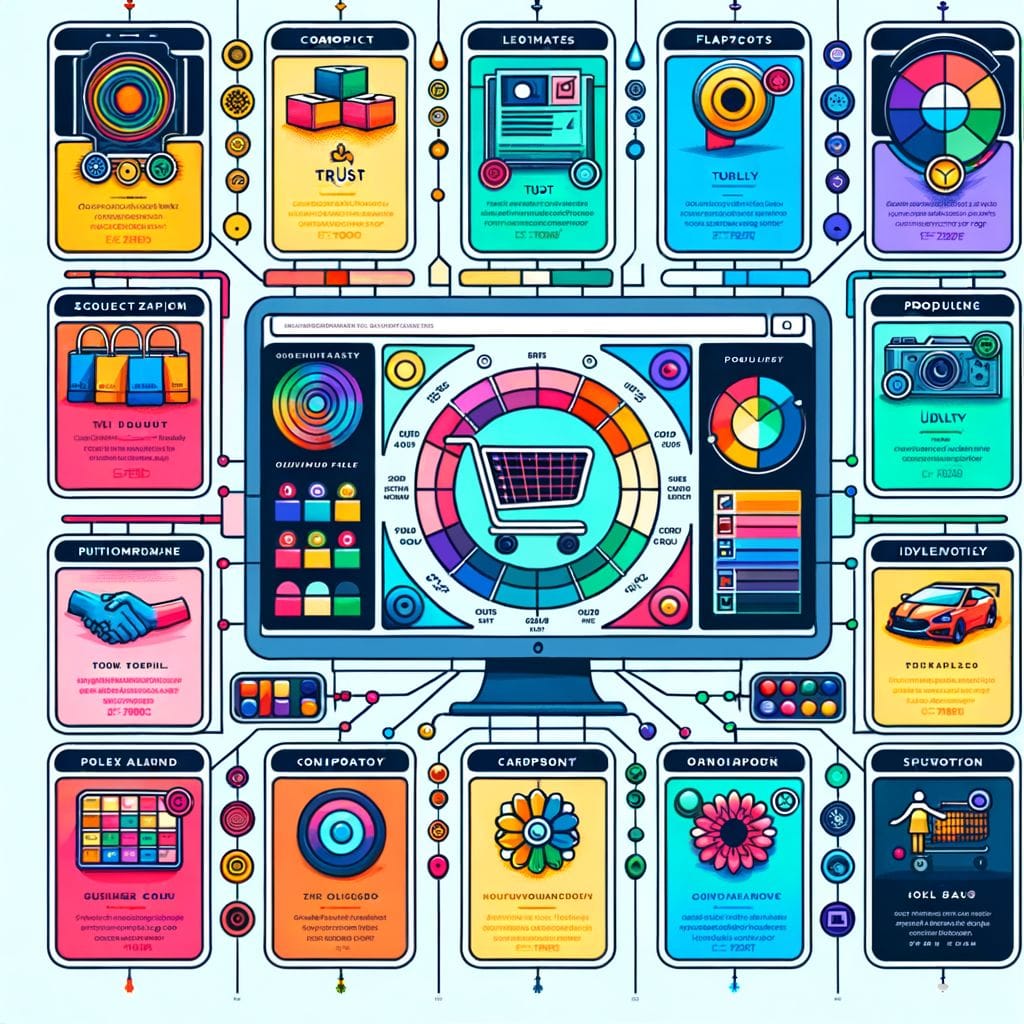Table of Contents
ToggleEmail marketing for e-commerce: How to create campaigns that convert
Email marketing remains at the forefront as one of the most effective and direct tools for communicating with customers in e-commerce. It’s not just about sending emails; it’s about creating a strategy that transforms those emails into real sales. This post delves into how to make your email marketing campaigns not only capture attention but also convert that attention into a tangible commercial impulse.
The importance of e-commerce email campaigns
In the dynamic world of e-commerce, email marketing acts as a bridge between brands and their customers. Unlike other more public channels, email allows for a direct and personalised conversation with your audience. This level of direct communication is invaluable in building a relationship of trust and loyalty. In addition, email marketing offers one of the highest return on investment (ROI) rates compared to other digital marketing channels. This is due to its ability to effectively segment and personalise messages, getting to the heart of customer needs and wants.
The key to success lies in relevance and personalisation, elements that make emails powerful tools to drive sales. A well-designed and targeted email can be the nudge a customer needs to make a purchase. However, for this to happen, it is crucial to understand the importance of the strategy behind each email marketing campaign. It’s not just about sending offers; it’s about creating an experience that enriches the customer’s relationship with your brand.
Defining objectives and target audience
Before sending a single email, it is essential to be clear about what you hope to achieve with each campaign. Whether it’s increasing brand awareness, driving sales of a specific product, or building loyalty with existing customers, each objective requires a different approach. This clarity will not only guide the design and content of your emails but also allow you to effectively measure the success of your efforts.
Knowing your target audience is just as crucial. Not all your customers are the same, and what works for one segment may not resonate with another. Understanding your audience’s preferences, behaviours and needs will allow you to create messages that speak directly to their wants and pain points. This attention to detail is what elevates an email marketing campaign from good to exceptional.

Database segmentation strategies
Segmentation is at the heart of any successful email campaign. Dividing your database into specific groups allows you to send personalised messages that are much more relevant to each segment. This relevance is key to increasing open, click-through and conversion rates. You can segment your database in many ways: by past purchase behaviour, interests shown through interactions with your website, demographics, geographic location and more.
A well-executed segmentation strategy transforms email marketing into a powerful tool to speak directly to different types of customers on their terms. This not only improves the effectiveness of your campaigns but also contributes to a more satisfying and personal customer experience.
Designing effective and eye-catching templates
The design of your emails plays a crucial role in how recipients perceive your message. A clear, professional template in line with your brand identity not only captures attention but also makes the message easier to read and understand. The choice of colours, images, and text layout should direct the eye to the most important elements, especially your call to action (CTA).
In addition, it is vital to make sure your templates are responsive. With an increasing number of users accessing their emails from mobile devices, your emails need to look good and work perfectly on all screens. A responsive design ensures that your message arrives intact, no matter how or where your audience is viewing it.
Optimisation for mobile devices
Mobile optimisation goes beyond responsive design. It includes considerations such as the size of buttons,
which should be easy to touch on touch screens, and the length of text, which should be concise for easy reading on mobile devices. Email subjects should also be short and engaging, as space is limited on mobile devices.
This optimisation is crucial in a world where more than half of all emails are opened on mobile devices. A positive user experience on mobile devices can mean the difference between an email that converts and one that is ignored.
Content and subject line personalisation
Personalisation is one of the most effective strategies in email marketing. Going beyond including the recipient’s name in the email subject line to personalising the content of the message based on the user’s previous interactions with your brand can significantly increase conversion rates. Personalised and relevant subject lines are more likely to be opened, while personalised content keeps readers engaged and effectively directs them to the CTA.
Frequency of delivery and ideal schedules
Finding the right balance in sending frequency is key. Too many emails can overwhelm your subscribers, while too few can cause your brand to be forgotten. The key is to understand your audience’s preferences and adjust your campaigns accordingly. Delivery schedules are also important; analysing your data will allow you to identify when your subscribers are most likely to open and interact with your emails.
Metrics and results analysis
Measuring the success of your email marketing campaigns is critical to understanding what resonates with your audience. Analysing metrics such as open, click-through, conversion and unsubscribe rates will provide you with valuable insights into your subscribers’ behaviour. This data is essential for fine-tuning and optimising your future campaigns.

A/B testing to improve conversion rates
Performing A/B tests is a best practice for any email marketing campaign. Testing different versions of your emails allows you to better understand which specific elements (such as subject lines, layouts, and CTAs) generate the best results. This data-driven approach is invaluable for optimising your conversion rates.
Email campaign automation
Automation allows you to send the right message, to the right subscriber, at the right time, without the need for ongoing manual intervention. From welcome emails to abandoned cart reminders and post-purchase follow-up emails, automation can help you build meaningful relationships with your customers at scale.
Privacy and security compliance
Last but not least, it is essential that your campaigns comply with data protection and privacy laws, such as GDPR. This is not only essential to avoid penalties but also demonstrates to your customers that you value and protect their privacy. Ensuring that your email marketing practices are transparent and secure will build trust in your brand and foster stronger relationships with your customers.
Creating email marketing campaigns that convert requires a mix of creativity, strategy, and constant analysis. By following these tips, you’ll be well equipped to design emails that not only capture your audience’s attention but also incentivise actions that benefit both your customers and your brand.






